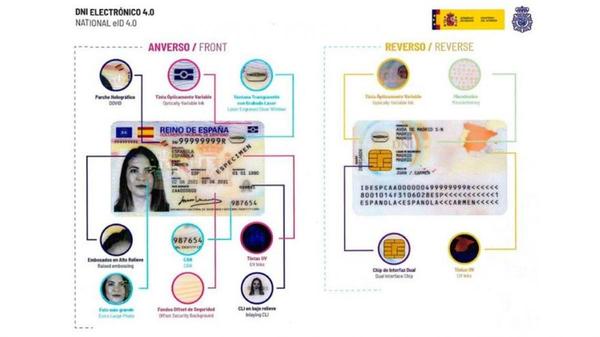The electronic DNI 4.0 must be implemented in all member countries of the European Union from next August 2. With this new European format come some changes, and one of them has been widely commented on by users: the photograph of the identity card will become mandatory in police stations.
The first identity card model was issued in Valencia on March 20, 1951. In July 1990 the computerized DNI arrived and in 2006 the electronic document, which already incorporated a chip and allowed connection to telematic services. Finally, since December 2015 there is the DNIe 3.0 that we have today. In all those years the citizen always had to carry his photos.
However, with just over 70 years of existence, our DNI has become European and completely digital. So much so that even our most official photo will be from now on.
What is the electronic DNI 4.0?
It is a new format in compliance with EU Regulation 2019/1157 of the European Parliament and of the Council of June 20, 2019. Its objective is to reinforce the security of the identity documents of the citizens of the European Union and the free circulation .
Another goal is to "address travel document fraud, incorporating document security measures such as identity and residence cards", explain official sources, who assure that "with a period of two months before On the date indicated, Spain already complies with the criteria established in this European Regulation, progressively providing all citizens with the new European format of electronic DNI 4.0”.
In addition to the much-mentioned change on the photographs, the document incorporates a new design, adding the flag of the European Union with the acronym inside of the country that issues the document and the indication of the title of National Identity Document in at least one other language. EU official.
How to Take an Infant's Pulse https://t.co/vzcch58vcZ
— Ementes Technologies Sun Jun 28 08:53:38 +0000 2020

The electronic DNI 4.0 was inaugurated by the Minister of the Interior, Fernando Grande-Marlaska, on June 2 at the Documentation Unit of the National Police Station of Móstoles (Madrid) and will be gradually implemented in all the Documentation Units. from all over Spain.
One of the main advantages for users will be that the new format will allow the citizen to prove his identity with his mobile, according to the Minister of the Interior.
Complaints were not long
The fact that it is no longer the citizens who take the photos to the police stations when they go to make their DNI has raised some concerns about whether this measure will mean the end of a sector that has already been beaten quite a bit: photo shops - and let's not say photo booths - have seen how their position in the market has been decreasing with the appearance of smartphones and photo printing platforms. Will this be his final blow?
As is often the case, some users have taken to social networks to complain about this measure, especially workers in the sector:
Is it a real threat to photo shops and photo booths?
Grande Marlaska himself defends that the electronic DNI 4.0 "will not end the photography sector", despite the fact that professional associations have sounded the alarm and warn that the photo of the DNI represents up to 50% for some establishments of the business.
On the contrary, the Minister of the Interior indicated that, according to the management of photo shops, of the 90 million euros invoiced on average per year, only 10% represents the photos of the DNI. He believes that the fact that it no longer has to be carried is a reduction in “burdens” for the citizenry.
At the national level, it is estimated that the DNI photography business moves around 45 million a year. The president of EUFoto, United Companies of the Photographic Sector, Juan Mendizábal, assures that "80% of neighborhood stores will not be able to withstand these changes", since for them the photos for the identity card represent more than 30% of your billing and, in some cases, up to 50%.
According to data from 2019, seven million DNIs are issued annually in Spain. Professionals in the sector are upset with the measure announced by the Government and believe that the example of other countries should be followed: in France and Germany, for example, passport photos will continue to be taken in photographic studios. In our country, on the other hand, the 25 million euros that Europe gives are going to be used to put up 'photo booths' in police stations.
Sign up for our newsletter and receive the latest technology news in your email.
The daring photo session of Megan Fox and Kourtney Kardashian that causes controversy: They are accused of plagiarism
The Canary Islands add 2,327 new positives and 15 deaths from COVID-19
Spain stagnates in the fight against corruption: the country has spent a decade maintaining its levels in the Corruption Perception Index, which includes the opinion of managers and experts
The 30 best Capable Women's Briefcase: the best review on Women's Briefcase